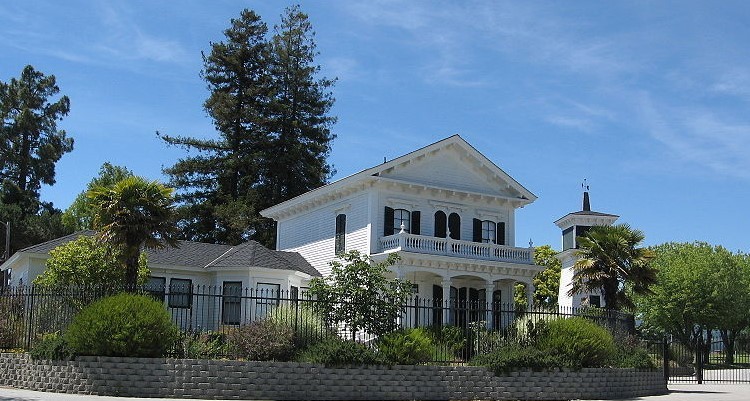Spoiler alert: Genealogists sharpen your pencils! You are going to need it.
James Martin Rodgers (1817–1901) was a visionary credited with platting out the original plots for Concord, Tennessee, in 1854 with the first lot sold in 1855. Local history only relates that Rodgers sold his Concord tracts and left for California. Little was known of the exact date that he left and why he left until today. Thanks to a clue from Tracy Haun Owens who alerted the author that Rodgers sold his land in Concord to her fifth great grandfather, Edmund Haun, and with some conjoined sleuthing from historical newspapers and the internet, we can now offer at least an educated guess to the surrounding mystery.

James Martin Rodgers
Rodgers’ obituary relates that he was of “Revolutionary Stock” and that his grandfather returned to his native state of Virginia after the War and then migrated to Tennessee where he had a son William Rodgers (1794–1866). William would marry Mahala Lowe (1798–1873) of the Lowe’s Ferry family. Both William and Mahala are buried in the Pleasant Forest Cemetery in Farragut.
James Martin Rodgers was born of that union, and he would later marry Melvina Galbraith (1828–1904). Together they raised 11 children over 25 years. They were recorded as living in the Concord community in the 1850 census, and their first son, Lee Omar, was born in 1851.
Genealogists that are not faint of heart may wish to further study James Martin’s sister Semira Ann Amanda Rodgers who married Samuel Love Russell (lineage of Patriot Robertus Love for which Lovell Road is named). Her lineage includes ancestors of the Russell, Campbell and Abel clans of the Concord community. Malvina Galbraith’s brother, Lee Temple Galbraith, begat the lineage of Frank Pate Galbraith, another well-known family in Concord.

Malvina Galbraith Rodgers
In 1853, a young James Martin left with his three brothers following the dream of striking gold in California. Historical records indicate that a daughter, Mary, was born in Concord at that same time, and, if that is accurate, he must not have taken his family along with him to California. After claiming a “stake,” he returned to Concord in 1855, at which time he laid out his plans for Concord that involved 55 plats, reserving 14 plats for the East Tennessee and Georgia railroad that was being built.
Toward the end of the Civil War in 1864, Rodgers left again for California, taking his entire family with him, where he became very prosperous in the farming and the fruit industry. His beautiful Victorian era home in Watsonville, California, is now on the historical register and has been moved to the entrance of the Santa Cruz County Fair Grounds. James Martin Rodgers’ grandson, Carrol Rodgers (son of Charles H. Rodgers), was married to Esther Steinbeck, sister of famed author John Steinbeck. John Steinbeck spent time at James Martin’s house over the years.
His biographical obituary laments that he returned to California after being “broken in fortune but not in spirit” reporting that his “property had been swept away.” The article is not clear which property it was referring to, i.e., the “stake” in California or his property in Tennessee. However, he sold his remaining 175 acres in Tennessee to Edmund Haun in 1866, who continued to sell the land until his death in 1876. Who was Edmund Haun? Well … he was the father of his nephew’s (Spencer Clay Rodgers) wife, Virginia Cordelia Haun Rodgers! Expect an exam on this soon, but we will make it an open book test.
Mona Isbell Smith is a retired computer systems analyst who enjoys freelancing.

